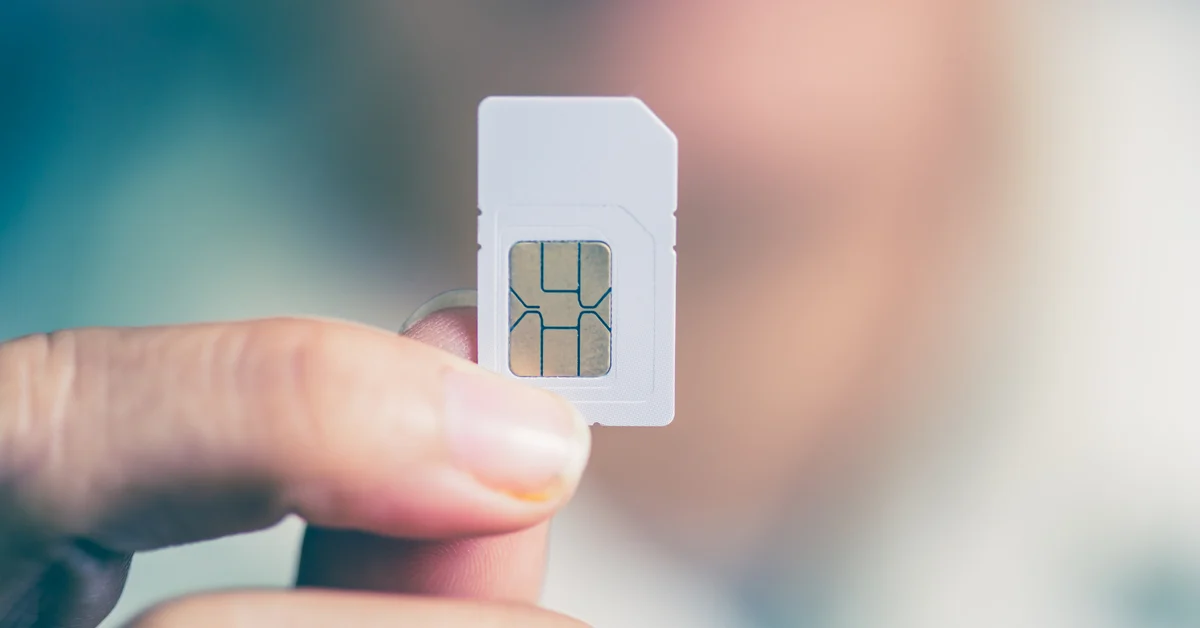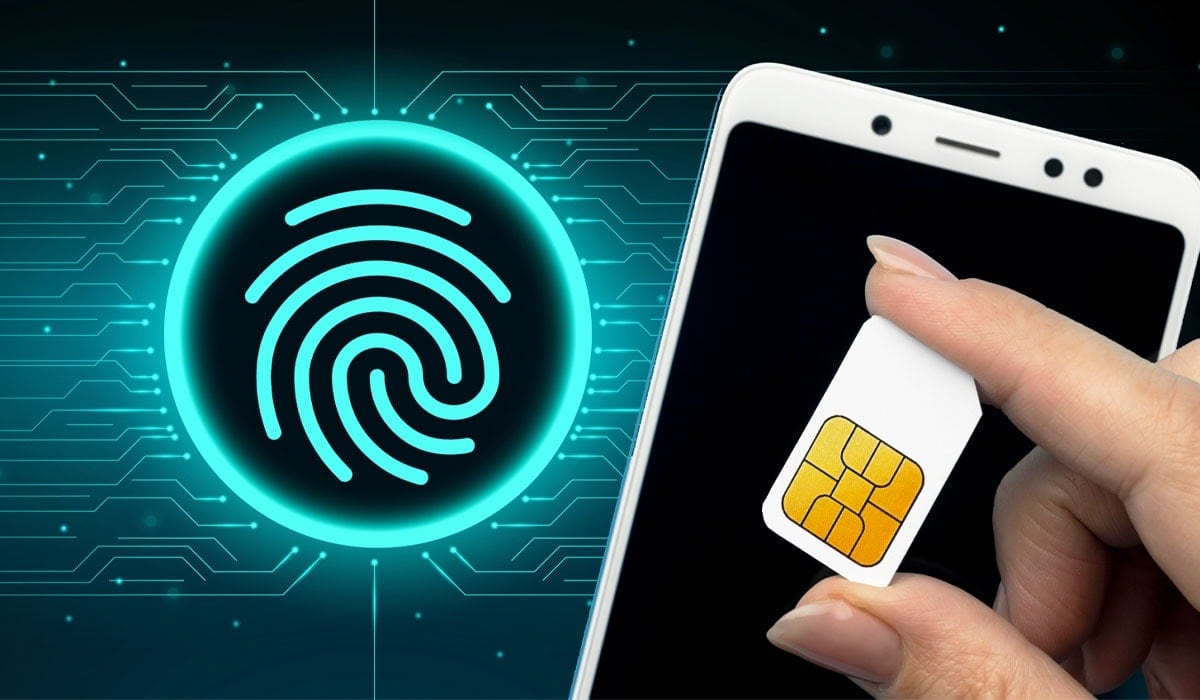Introduction
The Subscriber Identity Module, commonly known as the SIM card, is an integral component of modern mobile devices. It serves as the key to unlocking the potential of these devices, enabling users to connect with others, access information, and utilize a myriad of services. The evolution of SIM card technology has significantly influenced the telecommunications industry, shaping the way people communicate and interact in the digital age.
The inception of the SIM card can be traced back to the early days of mobile communication, when the need for a secure and portable method of identifying subscribers became apparent. As mobile networks expanded and the demand for reliable and convenient communication services grew, the development of the SIM card became paramount.
In this article, we will delve into the historical evolution of the SIM card, exploring its early developments, the groundbreaking invention of the first SIM card, and the subsequent advancements that have propelled this technology to its current state. Additionally, we will examine the impact of the SIM card on the telecommunications industry, shedding light on its role in revolutionizing mobile communication and shaping the way we connect with the world around us.
Join us on this journey through time as we unravel the fascinating story of the SIM card, from its humble beginnings to its pivotal role in the digital era. Let's explore the innovation, ingenuity, and technological advancements that have made the SIM card an indispensable element of modern mobile devices.
Early Developments of Subscriber Identity Modules
The early developments of Subscriber Identity Modules (SIM) can be traced back to the late 1980s when the concept of a portable and secure method of user identification for mobile devices began to take shape. As mobile telecommunication networks expanded, the need for a standardized method of authenticating subscribers across different networks became increasingly apparent. This led to the exploration of various technologies and form factors that could fulfill this crucial role.
During this period, the telecommunications industry witnessed a surge in research and development efforts aimed at creating a universal solution for user authentication and network access control. The emergence of digital cellular networks, such as the Global System for Mobile Communications (GSM), played a pivotal role in driving the demand for a standardized identification mechanism that could seamlessly integrate with these advanced networks.
In the quest to address this challenge, early iterations of subscriber identity modules took on diverse forms, ranging from plug-in cards to integrated circuit cards. These prototypes underwent rigorous testing and refinement to ensure compatibility with a wide array of mobile devices and network infrastructures. The collaborative efforts of industry stakeholders, including mobile network operators, device manufacturers, and standardization bodies, were instrumental in shaping the evolution of subscriber identity modules during this formative phase.
As the groundwork for SIM technology was being laid, key considerations such as security, interoperability, and user convenience were carefully evaluated and incorporated into the design and functionality of these early modules. The development of robust encryption algorithms and authentication protocols was integral to fortifying the security features of SIM cards, safeguarding sensitive user information and mitigating the risk of unauthorized access.
Furthermore, the standardization of SIM card specifications and functionalities played a pivotal role in fostering interoperability across different mobile networks and devices, laying the groundwork for a seamless and user-centric experience. This concerted effort to establish industry-wide standards and best practices set the stage for the widespread adoption of SIM technology and paved the way for its integration into the fabric of modern mobile communication.
The early developments of subscriber identity modules marked a critical phase in the evolution of mobile telecommunications, setting the stage for the groundbreaking advancements that would follow. These formative years laid the groundwork for the birth of the first SIM card and established the foundation upon which the future of mobile communication would be built.
The First SIM Card
The birth of the first SIM card marked a pivotal moment in the history of mobile telecommunications, heralding a new era of convenience, security, and portability for subscribers. The groundwork laid during the early developments of subscriber identity modules culminated in the creation of a revolutionary device that would fundamentally transform the way users accessed and utilized mobile networks.
In 1991, the first SIM card, as we know it today, was introduced to the world, representing a significant leap forward in user authentication and network access control. This milestone achievement was made possible through the collaborative efforts of industry pioneers and innovators who recognized the pressing need for a standardized and interoperable solution to enable seamless connectivity across diverse mobile networks.
The first SIM card, characterized by its compact size and embedded integrated circuit, embodied the culmination of years of research, development, and standardization efforts. Its introduction heralded a paradigm shift in the mobile telecommunications landscape, empowering users with a portable and secure means of accessing network services and personalizing their mobile experience.
This groundbreaking invention not only facilitated the seamless integration of user identity and subscription information into mobile devices but also laid the foundation for enhanced security measures, enabling secure authentication and encryption protocols to safeguard user data and communications.
The introduction of the first SIM card also marked a significant milestone in the evolution of mobile devices, as it paved the way for the development of smaller and more advanced mobile handsets that could accommodate the compact form factor of the SIM card. This convergence of technology and design set the stage for the widespread adoption of SIM-enabled mobile devices, empowering users with unprecedented mobility and connectivity.
The debut of the first SIM card represented a triumph of innovation and collaboration, propelling mobile telecommunications into a new era of accessibility and user empowerment. Its impact reverberated across the industry, catalyzing further advancements and laying the groundwork for the pervasive role that SIM technology plays in the modern mobile ecosystem.
The introduction of the first SIM card marked a transformative moment in the history of mobile telecommunications, shaping the trajectory of the industry and empowering users with a newfound sense of freedom and connectivity. This watershed moment set the stage for the relentless evolution of SIM card technology, driving continuous innovation and shaping the future of mobile communication.
Evolution of SIM Card Technology
The evolution of SIM card technology has been characterized by a relentless pursuit of innovation, driven by the convergence of technological advancements, user demands, and industry dynamics. From its humble beginnings as a compact authentication module to its current state as a sophisticated enabler of mobile connectivity, the trajectory of SIM card evolution has been marked by transformative leaps that have reshaped the mobile telecommunications landscape.
The early iterations of SIM cards, characterized by their standard credit card-sized form factor, laid the foundation for subsequent advancements in miniaturization and integration. As mobile devices evolved to become more compact and sleek, the demand for smaller and more versatile SIM cards grew. This led to the development of smaller form factors, such as the micro-SIM and nano-SIM, which revolutionized the design and functionality of modern mobile devices.
Furthermore, the evolution of SIM card technology has been closely intertwined with the advancements in mobile network standards and capabilities. The transition from 2G to 3G, and subsequently to 4G and 5G, brought about a paradigm shift in the capabilities and functionalities of SIM cards. With each generational leap, SIM cards have evolved to support enhanced data transfer speeds, improved security features, and expanded storage capacities, enabling users to harness the full potential of advanced mobile networks.
The integration of embedded SIM (eSIM) technology represents another significant milestone in the evolution of SIM cards. eSIMs, characterized by their absence of a physical form factor, have redefined the concept of SIM card provisioning and management. This virtualized approach to SIM technology offers unprecedented flexibility, allowing users to remotely provision and switch between mobile network operators without the need for physical SIM card swaps.
Moreover, the evolution of SIM card technology has extended beyond traditional mobile devices to encompass a diverse array of connected devices and IoT (Internet of Things) applications. SIM cards tailored for IoT deployments have been developed to meet the unique requirements of connected devices, offering specialized functionalities such as low power consumption, extended durability, and seamless integration with IoT platforms.
The future trajectory of SIM card technology holds the promise of further innovation, with advancements in areas such as embedded security features, enhanced interoperability, and seamless integration with emerging technologies like 5G, AI, and edge computing. As the mobile landscape continues to evolve, SIM cards are poised to play a pivotal role in enabling next-generation mobile experiences and shaping the interconnected world of tomorrow.
The evolution of SIM card technology stands as a testament to the industry's unwavering commitment to pushing the boundaries of possibility, empowering users with seamless connectivity, and redefining the role of mobile devices in the digital age. With each leap forward, SIM cards have transcended their conventional functions, evolving into catalysts for transformative mobile experiences and driving the relentless pursuit of technological advancement.
Impact of SIM Card on Telecommunications Industry
The advent of the SIM card has had a profound and far-reaching impact on the telecommunications industry, reshaping the dynamics of mobile communication and catalyzing transformative shifts in user behavior, network infrastructure, and business models. The pivotal role played by SIM cards in enabling secure and seamless connectivity has reverberated across the industry, driving significant advancements and shaping the trajectory of mobile telecommunications.
One of the most notable impacts of SIM cards on the telecommunications industry lies in their role as a catalyst for mobile network proliferation and accessibility. By providing a standardized and portable method of user identification and authentication, SIM cards have facilitated the widespread adoption of mobile devices and services, transcending geographical boundaries and empowering users with ubiquitous connectivity. This ubiquitous access to mobile networks has not only facilitated personal communication but has also served as a catalyst for economic development, bridging the digital divide and enabling communities to harness the transformative power of mobile connectivity.
Furthermore, SIM cards have played a pivotal role in fostering competition and innovation within the telecommunications industry. The interoperability and standardization of SIM technology have created an open and competitive ecosystem, enabling users to seamlessly switch between mobile network operators and stimulating the development of diverse service offerings. This competitive landscape has incentivized operators to differentiate themselves through innovative service bundles, pricing strategies, and value-added offerings, ultimately benefiting consumers by fostering a vibrant and dynamic marketplace for mobile services.
Moreover, the security features embedded within SIM cards have been instrumental in safeguarding user privacy and fortifying the integrity of mobile communications. By leveraging robust encryption algorithms and authentication protocols, SIM cards have mitigated the risk of unauthorized access and fraudulent activities, instilling trust and confidence in the integrity of mobile networks. This focus on security has not only protected user data but has also underpinned the evolution of mobile commerce, enabling secure transactions and paving the way for the widespread adoption of mobile payment and banking services.
Additionally, the evolution of SIM card technology has been closely intertwined with the advancements in mobile network standards and capabilities. The transition from 2G to 3G, and subsequently to 4G and 5G, brought about a paradigm shift in the capabilities and functionalities of SIM cards. With each generational leap, SIM cards have evolved to support enhanced data transfer speeds, improved security features, and expanded storage capacities, empowering users to harness the full potential of advanced mobile networks.
Furthermore, the integration of embedded SIM (eSIM) technology represents another significant milestone in the evolution of SIM cards. eSIMs, characterized by their absence of a physical form factor, have redefined the concept of SIM card provisioning and management. This virtualized approach to SIM technology offers unprecedented flexibility, allowing users to remotely provision and switch between mobile network operators without the need for physical SIM card swaps.
Moreover, the evolution of SIM card technology has extended beyond traditional mobile devices to encompass a diverse array of connected devices and IoT (Internet of Things) applications. SIM cards tailored for IoT deployments have been developed to meet the unique requirements of connected devices, offering specialized functionalities such as low power consumption, extended durability, and seamless integration with IoT platforms.
The future trajectory of SIM card technology holds the promise of further innovation, with advancements in areas such as embedded security features, enhanced interoperability, and seamless integration with emerging technologies like 5G, AI, and edge computing. As the mobile landscape continues to evolve, SIM cards are poised to play a pivotal role in enabling next-generation mobile experiences and shaping the interconnected world of tomorrow.
The evolution of SIM card technology stands as a testament to the industry's unwavering commitment to pushing the boundaries of possibility, empowering users with seamless connectivity, and redefining the role of mobile devices in the digital age. With each leap forward, SIM cards have transcended their conventional functions, evolving into catalysts for transformative mobile experiences and driving the relentless pursuit of technological advancement.
Conclusion
The evolution of the SIM card stands as a testament to the relentless pursuit of innovation and the transformative impact of technology on the telecommunications industry. From its humble beginnings as a compact authentication module to its current state as a sophisticated enabler of mobile connectivity, the journey of the SIM card has been marked by groundbreaking advancements that have reshaped the mobile telecommunications landscape.
The historical overview of the SIM card illuminates the pivotal role it has played in revolutionizing mobile communication and empowering users with seamless connectivity. The early developments of subscriber identity modules laid the groundwork for the birth of the first SIM card, marking a transformative moment that heralded a new era of convenience, security, and portability for subscribers.
The subsequent evolution of SIM card technology has been characterized by a relentless pursuit of innovation, driven by the convergence of technological advancements, user demands, and industry dynamics. The transition from standard credit card-sized SIM cards to smaller form factors, such as the micro-SIM and nano-SIM, exemplifies the industry's commitment to enhancing user experience and device design.
Moreover, the integration of embedded SIM (eSIM) technology represents a significant leap forward, offering unprecedented flexibility and redefining the concept of SIM card provisioning and management. This virtualized approach to SIM technology is poised to reshape the dynamics of mobile connectivity, enabling users to seamlessly switch between mobile network operators and devices without physical SIM card swaps.
The impact of SIM cards on the telecommunications industry has been multifaceted, fostering ubiquitous mobile network access, stimulating competition and innovation, fortifying the security of mobile communications, and catalyzing the evolution of mobile commerce and IoT applications. The ubiquitous access to mobile networks has not only facilitated personal communication but has also served as a catalyst for economic development, bridging the digital divide and enabling communities to harness the transformative power of mobile connectivity.
As the mobile landscape continues to evolve, SIM cards are poised to play a pivotal role in enabling next-generation mobile experiences and shaping the interconnected world of tomorrow. The industry's unwavering commitment to pushing the boundaries of possibility, empowering users with seamless connectivity, and redefining the role of mobile devices in the digital age underscores the enduring significance of the SIM card in shaping the future of mobile telecommunications.
In conclusion, the historical overview of the SIM card serves as a testament to the indelible impact of this technology on the fabric of modern mobile communication. From its inception to its current state, the SIM card has been a catalyst for transformative change, empowering users, fostering innovation, and shaping the interconnected world of tomorrow.

























